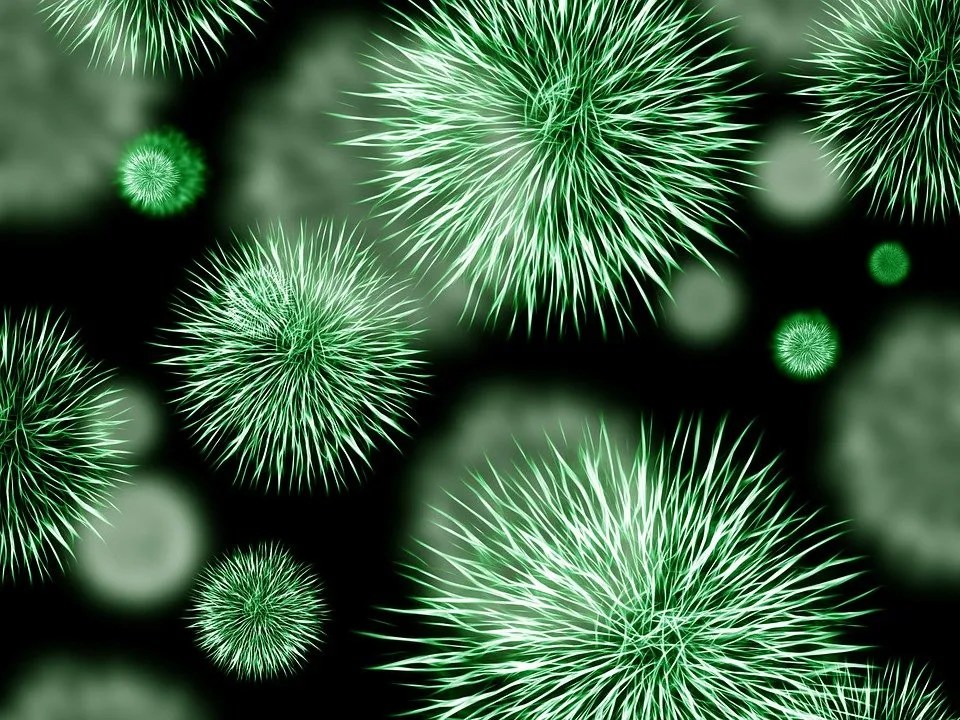
The word pathogen is a very broad one; it means illness causing agent. Pathogen is a combination of two Greek words: Pathos and Genes; meaning “suffering” and “producer of.” The literal meaning of the word pathogen therefore is “Producer of Suffering.”
In biology this is a very broad term and can include any of the microscopic things that can cause illness, including virus, bacterium, protozoan, prion, viroid, or fungus. Small animals can also cause illnesses, but those are usually referred to as Parasites.
The scientific study of pathogens is called microbiology; which is quite different from parasitology which deals with the study of the animals that host them. There are different types of pathogens, and the ways via which they can invade a host also varies.
Types of Pathogens
1. Bacteria
Bacteria is the most popular type of pathogen; perhaps because it is abundant in our world. Typically, bacteria can be found on most surfaces in the natural world, and even below the surface of the soil. Most bacteria are harmless or beneficial to humans, however, there are a few pathogenic bacteria that can cause infectious diseases.
Bacteria can cause illnesses through several ways; the most common being that they weaken the cells of their host, produce toxins that damage the cells of their host, or sometimes they cause immune reactions which make the cells of the body attack each other, thus causing sickness.
Some popular bacteria include: Mycobacterium tuberculosis which causes Tuberculosis. This killed around 1.5 million people in 2013, mostly in sub-Saharan Africa.
Shigella, Campylobacter, and Salmonella: are bacteria which can cause food borne diseases. Sometimes these bacteria can be picked up from the soil, although these pathogens are also picked from contact with poo and pee.
Steptococcus and Pseudomonas are also common bacteria; they are known to cause illnesses in the throat and chest.
2. Algae
Algae are single-celled organisms that have certain similarities to plants, with whom they are often classified. Out of the many varieties of algaes, very few are known to be pathogenic.
An example of Algae is Prototheca wickerhami, which is the cause for most human cases of the rare infection of protothecosis. This disease is also known to affect dogs, cats, and cattle as well. The pathogen is often found in soil and sewage.
3. Fungi
Fungi are many and varied. They range from tiny microorganisms like yeasts and molds; to the more familiar mushrooms. While many fungi are useful (food and medicine); there are many fungi that are known to be pathogenic to humans.
Some Examples of Pathogenic fungi include;
Candida albicans, which is the most common cause of thrush; a sexually transmitted disease, which may also be transmitted through other forms of contact.
Cryptococcus neoformans; which is a form of fungi that can cause a severe form of meningitis.
The list is quite long; there are about 300 known fungi that are pathogenic to humans.
4. Prions
The exact classification for prions is a matter of debate; but these are pathogenic agents that can cause the folding of specific proteins in the body. These tiny pathogens are transmissible; and can lead to epidemic level outbreaks of diseases.
Some Examples of the diseases caused by prions include scrapie, bovine spongiform encephalopathy (mad cow disease) and feline spongiform encephalopathy (FSE). In humans some of the diseases caused by prions include Creutzfeldt–Jakob disease (CJD), and Fatal familial insomnia (FFI).
5. Viroids
Viroids are different from viruses which will be discussed afterwards. These are the smallest infectious pathogens known to man; and they are made up of short strands of circular, single-stranded RNA without any protein coating. All known viroids are live in plant matter, and most of them cause illnesses.
6. Viruses
Viruses are small particles; they cannot be seen with the naked eye. Viruses require a host cell to replicate; they can replicate very quickly when there is a host; meaning that the host becomes very ill.
Some of the diseases caused by viruses include;
Smallpox: an illness characterized by rashes/lesions (small bumps) on the body. The illness usually comes with Fever, Muscle aches, Headache, Severe fatigue, and Severe back pain.
Influenza: an illness characterized by problems in the nose, throat and lungs. The illness usually comes with fever, muscle aches, cough, congestion, chills, runny nose, headaches and fatigue.
Measles: an illness which affects the respiratory system, and which is characterized by a fever, cough, coryza, and conjunctivitis.
Chickenpox: a highly contagious disease which can cause an itchy, blister-like rash. This rash may start on the chest, back, and face, and then spreads over the entire body.
Other deadly pathogens include: ebola, HIV, rubella, and COVID-19.
What Are The Treatments Against Pathogens?
It is therefore important to note that a preventive measure which works on one kind of pathogen may be a complete waste of time on another type of pathogen. Even treatments that are effective on one pathogen may not work on other pathogens which are in the same class. For example; what works on some bacteria may be useless against viruses. What works on some kinds of bacteria may not work on other bacteria.
Treatment For Prions
Research into the ways of treating prions has been ongoing for years, but at present, there has been very little success in finding treatment. This is because no therapy has been shown to halt the progression of prion diseases effectively and verifiably.
Treatment For Viruses
There are many treatment options available for some viral pathogens. The most recommended forms of action against is vaccination, although that is more preventive than reactive.
As far as viruses are concerned; when the person has become infected; most of the treatment given revolve around the comfort of the host or patient, rather than reversing the action of the virus, or halting of its progress. That means most of the treatment is palliative; only intended to deal with the symptoms, thus reducing discomfort.
However, there are some exceptions; certain kinds of treatment are intended to reduce the symptoms, thereby giving the host body time to develop antibodies which will naturally fight off the infection. In some cases, is to prevent loss of immunity cells; such as that of the antiretroviral treatment against HIV, which halts the progression of the disease into AIDS.
Treatment For Bacteria
Bacteria are some of the most common pathogens; there it would be terrible if there was no available treatment for bacterial infections. Aside from vaccination which some insist is the best way to beat bacteria, there are many different kinds of antibiotics which treat bacterial infections.
Some of the most common antibiotics include amoxicillin, ciprofloxacin, and tetracycline. Each antibiotic is most effective against a certain type of bacteria. This is why it is important to see a doctor so as not take the wrong medication which will not work for the particular pathogen; and which could even lead to other pathogens becoming resistant.
An example of bacterial treatment is ciprofloxacin which is used to treat typhoid fever, and some other infections in the body.
A common problem being encountered in the healthcare system presently is the issue of resistance to antibiotics. Many strains of bacteria are becoming resistant to bacteria due to the overuse of antibiotics. This makes some of these diseases more difficult to treat.
Treatment For Fungi
There are anti fungal treatments available for both skin and internal fungal infections; these are called antifungal medication. Some of the common fungal ailments include athlete’s foot, jock itch, and ringworm; which are skin infections.
Other kinds of fungi include infections of yeast like Candida Albicans, which can cause infections of the mouth, throat, and reproductive organs.
The treatment for fungal infections of the throat, mouth, and vagina include; Echinocandin family of drugs and Fluconazole.
Treatment For Algae
Algae are not usually classified as pathogens; most of them are completely harmless to man. However, the genus Prototheca is known to cause disease in humans and animals.
Research is ongoing to find viable forms of treatment for this disease. However, it is important to state that there is presently no cure for this type of ailment.
Preventive Measures Against Pathogens
As mentioned above; “pathogens” is a very broad term used to describe the many different types of illness causing germs which abound all over the earth. Therefore, it is reasonable to expect that the preventive measures which are effective for the different pathogens will differ.
Preventive Measures For Viruses
The most recommended form of action against viruses is vaccination. There are many effective vaccines in use against the common viral pathogens. In fact vaccination is the best form of treatment for viruses. The work of vaccines is to prepare the host for attack from the pathogen so that when it does meet it in the wild, the immune system can respond accordingly.
Some of the available vaccines include those for measles, mumps, and rubella viruses and the influenza virus. Some viruses are been researched at present for development of vaccines; they include HIV, dengue, and chikungunya.
Hand washing is also being emphasized much around medical circles as a way of preventing infection from viruses. Hand washing facilities are being installed in public buildings, especially in the wake of Covid 19 which is caused by a corona virus.
Although it has been a practice in medical facilities to wear nose masks; this preventive measure has also become popular among people in the non medical world as well. People are mandated to wear nose masks before entering some public buildings; and in some countries people are mandated to wear nose masks just to show up in public. This too became popular in the wake of the Covid 19 pandemic.
Preventive Measures For Bacteria
Just like it viruses, infection by certain bacterial pathogens can be prevented with the use of vaccines. Some of the vaccines that are known to work against bacterial pathogens include those for anthrax and pneumonia.
There are many bacteria presently being researched for the development of vaccines.
Other preventive measures for bacteria include:
Addition of chemicals to public water supply systems. This drastic water purification measure is intended to kill the pathogens in the water which can cause illness when the water is consumed. Of course there are many other ways via which water can be purified; and private homes also have purification processes that they prefer.
Hand washing is also encouraged as a means of keeping bacterial pathogens at bay. Hand Washing works so well because bacteria can sometimes be on the surfaces where our hands are frequently put.
Many of the bacteria that commonly cause illnesses in humans enter through the oral route. Some of them appear when food is not properly stored. Proper storage of food is therefore a good way of preventing bacteria. Sometimes, heating the food is also one way of preventing bacteria.
Some of the bacteria are present in fecal matter; therefore, it is important to exercise caution when coming in contact with fecal matter. That means thorough cleaning of the self, and the environment in which food is to be cooked and served. When handling a child who is sick; especially with diarrhea, it may be a good idea to avoid cooking or serving food to other children and adults, so as to reduce the chances of transmitting the same illness to other members of the household.
What To know About Pathogens?
Some Pathogens, especially bacterial pathogens are very adaptive; therefore it is important to see a doctor whenever one becomes ill with a disease caused by a pathogen. This is because pathogens can become resistant to treatment, which means we must be very careful so as not to make the pathogens stronger.
Some pathogens can multiply very rapidly once they reach a host; which is why care must be taken to ensure that the diseases are treated as soon as they are noticed.
It is possible for more than one type of pathogen to be present in a body at a time; for complete diagnosis and treatment it is important to visit a doctor.



